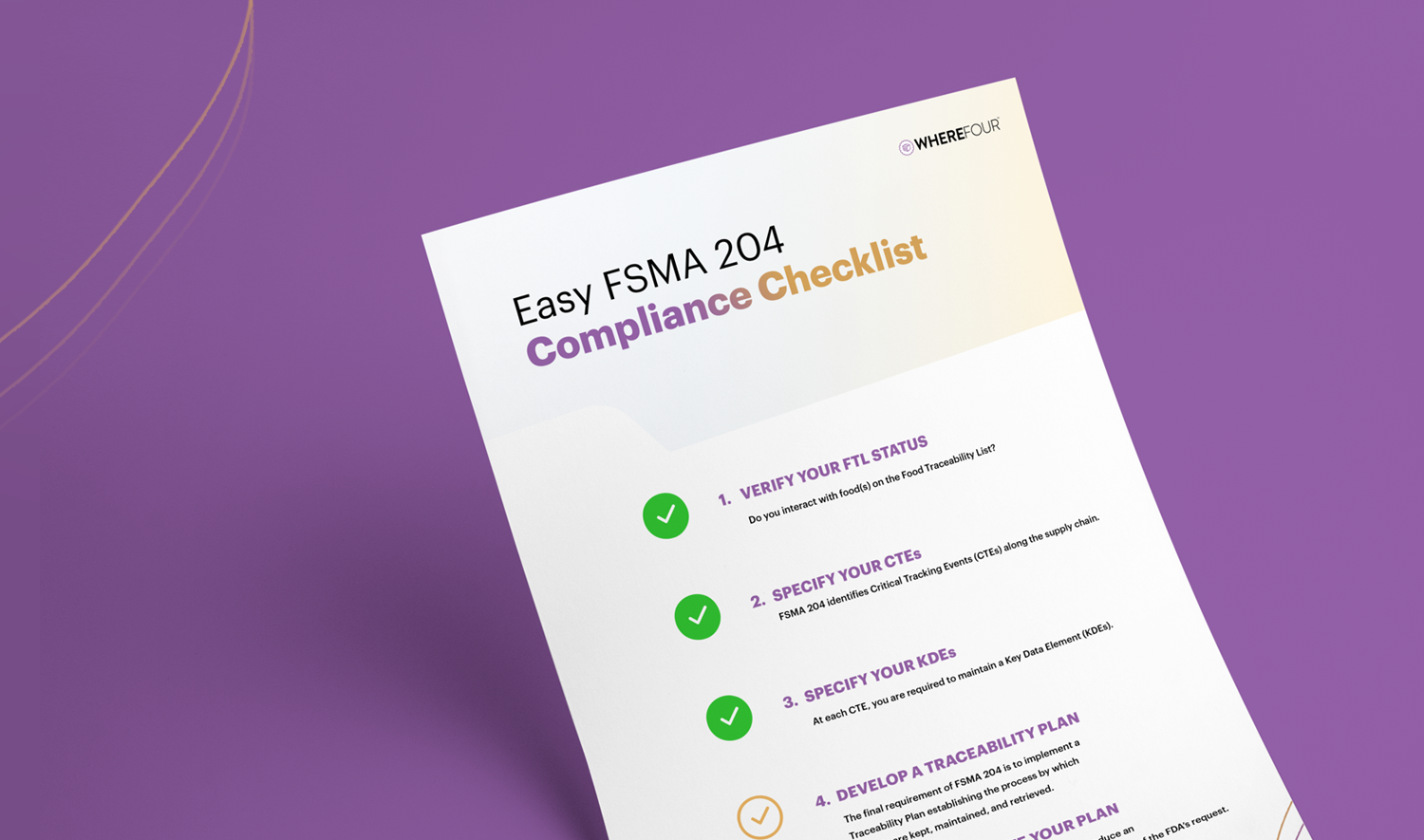The FDA’s Food Safety Modernization Act Food Traceability Rule (FSMA 204) compliance date is fast approaching. With the goal of enhanced tracking and tracing of certain foods on our global food supply chain, it is our shared duty to improve our interconnected food system and upgrade record keeping methods. Depending on the specific industry, market sector, and product(s) that you interact with, there are various requirements for you to be aware of.
January 20, 2026 might seem far away, but don’t wait until the last minute to meet these requirements!
Here’s a simplified checklist to help you achieve compliance for FSMA 204.
FSMA 204 Compliance Checklist
Verify Your FTL Status
Do you interact with food(s) on the Food Traceability List? Do you manufacture, process, pack or hold these specified food items? If yes, proceed with the checklist. If no, this rule does not apply to you! (But you might benefit from record keeping and traceability upgrades anyway!)
Specify Your CTEs
FSMA 204 identifies Critical Tracking Events (CTEs) along the supply chain. To simplify, these CTEs are any point when the FTL item is transformed or changes hands. If you HARVEST, COOL, PACK, IMPORT, SHIP, RECEIVE or TRANSFORM any FTL item, this is a CTE.
Specify Your KDEs
At each CTE, you are required to maintain a Key Data Element (KDEs). KDEs include — but are not limited to — batch number, lot number, harvest date, harvest location, quantity, unit of measure, name and description. KDEs are compounding, too. For example, if you grow, harvest, dehydrate and combine cucumbers into a ready-to-drink beverage, your records will reflect KDEs for cucumbers at a minimum of four CTEs. If your RTD beverage contains other ingredients, you will have additional KDEs for each CTE for each item.
Develop A Traceability Plan
The final requirement of FSMA 204 is to implement a Traceability Plan establishing the process by which records are kept, maintained, and retrieved. If you prioritize recall readiness, you probably already have this plan in place.
At a minimum, your Traceability Plan must contain the following information:
Test and Evaluate Your Plan
FSMA 204 specifies that you must be able to produce an electronic sortable spreadsheet of data within 24 hours of the FDA’s request. And this data, along with the plan itself, has a mandatory retention period of two years. So, test and evaluate your plan early and often, and update as needed. Just like being recall ready in your day-to-day operations, being FSMA 204 ready as soon as possible ensures that you won’t be caught off guard.
Need a template for your manual Traceability Plan? Want the ability to automate and simplify your Traceability Plan?Contact Wherefour today!
How An ERP Platform Enables FSMA 204 Compliance
Employing a cloud-based ERP platform for your day-to-day operations provides an advantage in achieving FSMA 204 compliance. The use of a centralized single source of truth ensures that all aspects of your operation are integrated, data management is streamlined, and end-to-end traceability is built-in. With Wherefour’s ERP suite, you can be confident that your data is accurate, accessible and permanently tied to your product’s full timeline — from raw material to point-of-consumption.


